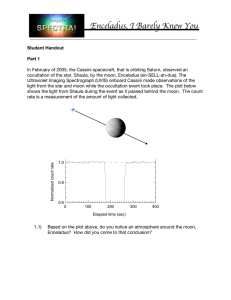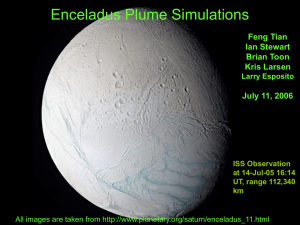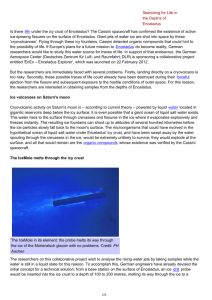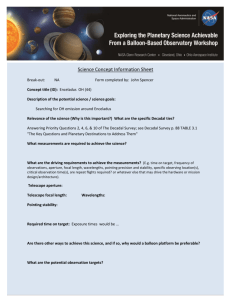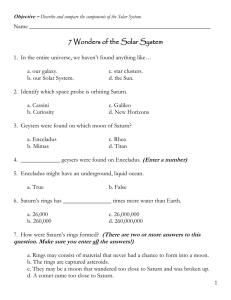Icy Jets from Enceladus Larry W. Esposito LASP, University of Colorado
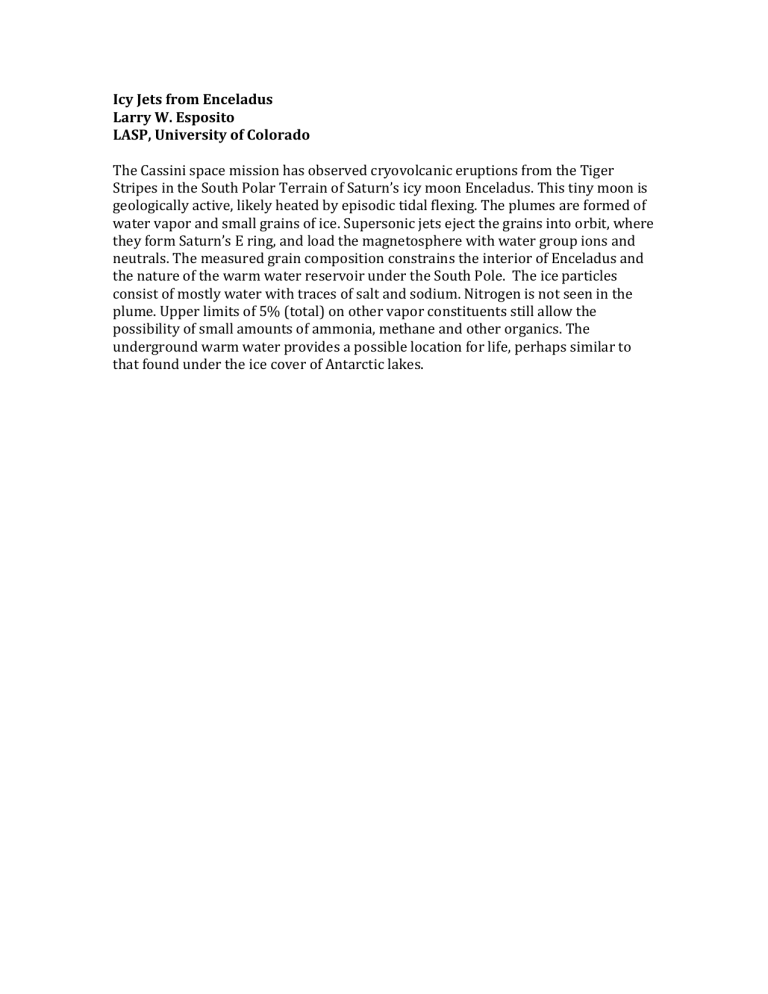
Icy Jets from Enceladus
Larry W. Esposito
LASP, University of Colorado
The Cassini space mission has observed cryovolcanic eruptions from the Tiger
Stripes in the South Polar Terrain of Saturn’s icy moon Enceladus. This tiny moon is geologically active, likely heated by episodic tidal flexing. The plumes are formed of water vapor and small grains of ice. Supersonic jets eject the grains into orbit, where they form Saturn’s E ring, and load the magnetosphere with water group ions and neutrals. The measured grain composition constrains the interior of Enceladus and the nature of the warm water reservoir under the South Pole. The ice particles consist of mostly water with traces of salt and sodium. Nitrogen is not seen in the plume. Upper limits of 5% (total) on other vapor constituents still allow the possibility of small amounts of ammonia, methane and other organics. The underground warm water provides a possible location for life, perhaps similar to that found under the ice cover of Antarctic lakes.


